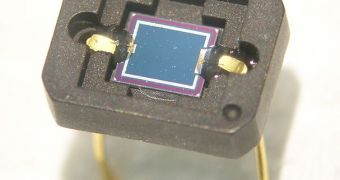Photodiodes represent a type of photodetectors capable of converting light either into current or voltage. They are relatively similar to regular semiconductor diodes, but they may be routinely exposed to ultraviolet or x-ray light. On the other hand, avalanche diodes work on a reverse voltage bias and experience avalanche breakdowns, or Zener breakdown while subjected to certain levels of tensions, or light in the case of the avalanche photodiodes.
The only problem is that avalanche photodiodes are mostly constructed by using the vacuum tube technology and are only capable of detecting ultraviolet light in short wavelengths in single photon detection mode and, as you might expect, vacuum tubes are rather bulky and expensive to make, disabling the miniaturization of the devices that use them.
Northwestern University Center for Quantum Devices have recently achieved a breakthrough in photomultiplier technology by creating a photodiode constructed out of semiconductor materials. The newly designed diode is capable of detecting single ultraviolet photons in the respective spectrum, ranging from 360 nanometers to 200 nanometers.
The GaN semiconductor material used to construct the photodiode, has high ionization coefficient for holes which enables the construction of back-illuminated single photon detection diodes. In fact, the team led by Manijen Razeghi was the first in the world to demonstrate the back-illumination capabilities of a III-nitride semiconductor chip. The special geometry required by the back-illumination enables the miniaturization of future photodiode multipliers in order to be incorporated as read-out outlets in single photon ultraviolet cameras.
As many of the photodiodes currently being produced, the new solid-state device operates under reverse voltage bias. It presents a photocurrent gain higher than 107, can detect single ultraviolet photons with a 23 percent efficiency and, most importantly, has no response to light in the visible spectrum. The device is soon to be optimized to get in production as soon as possible, with applications ranging from detecting biological agents to creating communication channels in the ultraviolet wavelength, similar to the infrared ones currently used all over the world.

 14 DAY TRIAL //
14 DAY TRIAL //